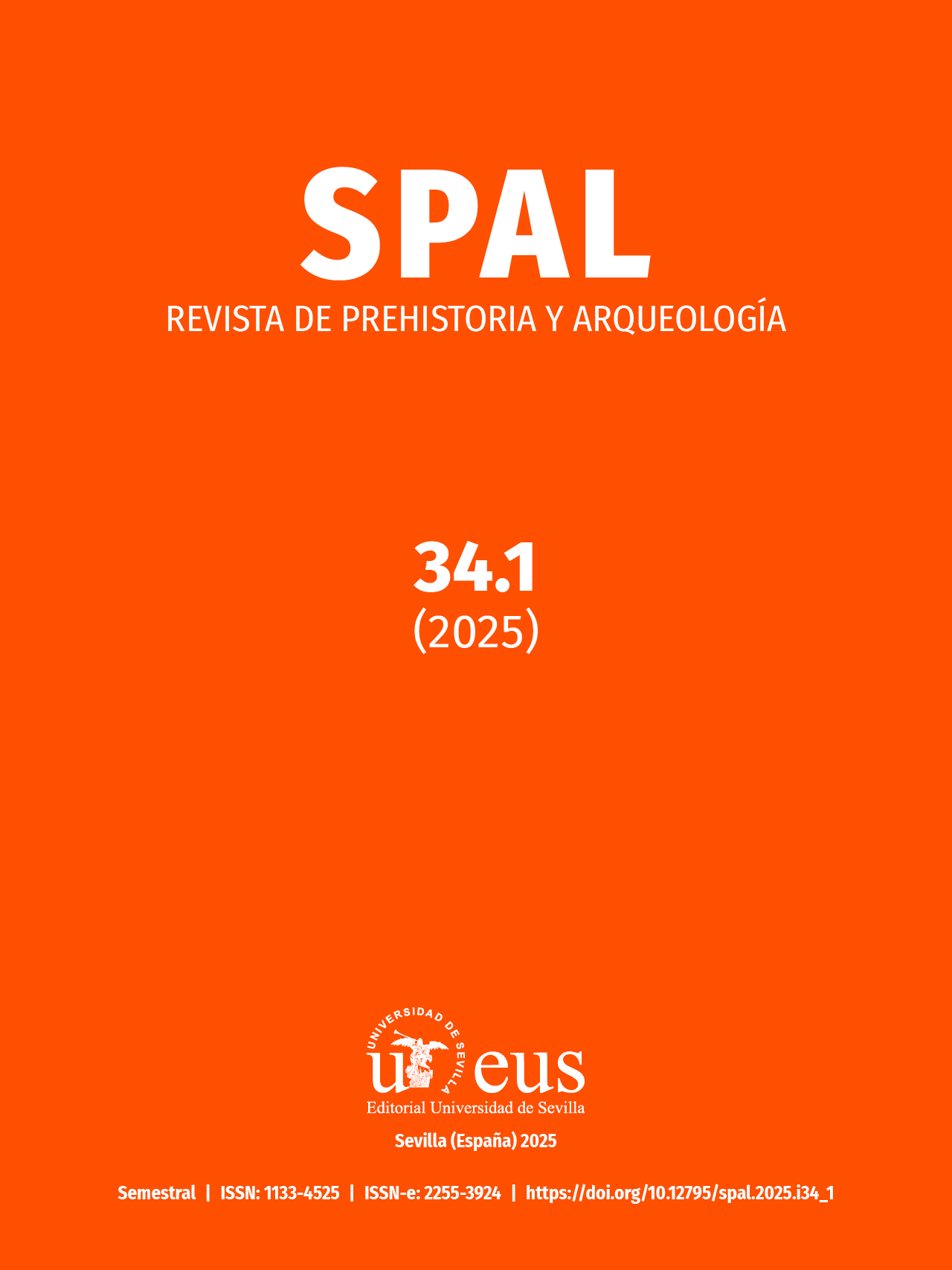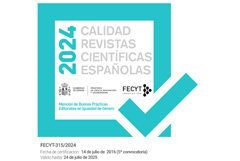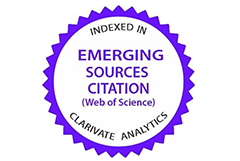Empowering Motherhood. Addressing gender preconceptions in Portuguese Late Prehistory
DOI:
https://doi.org/10.12795/spal.2025.i34.03Palabras clave:
Maternidad, Prehistoria Reciente, sur de Portugal, estrategias de cuidado, enfoque feministaResumen
Este texto aborda la maternidad en la prehistoria. Trata de contextualizar la maternidad en un contexto moderno y occidental y revisa la imposibilidad de aplicar el modelo actual predominante a la lectura de contextos prehistóricos. Pretende comprender cómo una visión empobrecida de la maternidad, en el contexto de una ideología patriarcal, relegó a las mujeres al hogar, así como exponer las imágenes que surgieron de este enfoque y su impacto en la construcción de prejuicios consolidados y naturalizados. También se presentarán líneas de investigación futura, con especial atención al contexto arqueológico portugués, en particular al Calcolítico del sur del país, con el objetivo de destacar la importancia de las estrategias de cuidado mantenidas en la dinámica social de las comunidades del pasado.
Descargas
Métricas
Citas
Acsádi, G.Y. and Nemeskéri, J. (1970) History of Human Life Span and Mortality. Budapeste: Akadémiai Kiadó.
Almeida, M.V. (2003) “Antropologia e sexualidade. Consensos e conflitos teóricos em perspectiva histórica”, in Soares J.M. and Vaz, J.M. (eds.) Sexologia, perspectiva multidisciplinar, Vol. II. Coimbra: Quarteto, pp. 53-72.
Arnold, B. (1991) “The deposed princess of Vix: the need for an engendered European prehistory”, in Walde, D. and Willows, N. (eds.) The archaeology of gender: proceedings of the 22nd annual Charcmool conference. Calgary: University of Calgary, pp. 366–74.
Arnold, B. (2016) “Belts vs. Blades: the Binary Bind in Iron Age Mortuary Contexts in Southwest Germany” («Binary Binds»: Deconstructing Sex and Gender Dichotomies in Archaeological Practice), Journal of Archaeological Method and Theory, 23(3), pp. 832-853. DOI: 10.1007/s10816-016-9289-8.
Bailey, D. (2013) “Figurines, Corporeality, and the Origins of the Gendered Body”, in D. Bolger (ed.) A Companion to Gender Prehistory. Oxford: John Wiley & Sons Inc., pp. 244-264. DOI: 10.1002/9781118294291.ch12.
Baker, B.J., Dupras, T.L. and Tocheri, M.W. (2005) The Osteology of Infants and Children
(Texas A&M University Anthropology Series 12). Texas: Texas A&M University Press.
Baptista, L. (2014) Relatório Final. Trabalhos de minimização de impactes sobre o património cultural decorrentes da execução do Bloco de Rega de Ervidel – Fase de Obra. Intervenção Arqueológica. Carrapateira 1. Archaeological Report, Beja: Arqueologia & Património Lda. Ref. code: 126421.
Beausang, E. (2000) “Childbirth in prehistory: an introduction”, European Journal of Archaeology, 3, pp. 69-87. DOI: 10.1177/146195710000300103.
Beauvoir, S. de (2011 [1949]) The Second Sex. New York: Vintage Book.
Birns, B. and Hay, D.F. (eds.) (1988) The different faces of motherhood. New York: Plenun Press. doi.org/10.1007/978-1-4899-2109-3.
Bolen, K.M. (1992) “Prehistoric construction of mothering”, in Claasen, C.P. (ed.) Exploring gender through archaeology. Selected papers from the 1991 Boone Conference. Madison: Prehistory Press, pp. 49-62.
Brito, S. (2023) “«Onde está o Wally?» Representações de Mulheres nos Museus de Pré-história” in Arnaud, J.M., Neves, C. and Martins, A. (coords.) Arqueologia em Portugal. 2023 – Estado da Questão. Lisboa: Associação dos Arqueólogos Portugueses, pp. 2115-2123.
Bruzek, J. (2002) “A method for visual determination of sex, using the human hip bone”, American Journal of Physical Anthropology, 117, pp. 157-168. DOI: 10.1002/ajpa.10012.
Bugalhão, J. (2013) “As Mulheres na Arqueologia Portuguesa”, in Arnaud, J.M., Martins, A. and Neves, N. (coords.) Arqueologia em Portugal, 150 anos. Lisboa: Associação dos Arqueólogos Portugueses, pp. 19-23.
Buikstra, J.E. and Ubelaker, D.H. (1994) Standards for data collection from human skeletal remains. Fayetteville: Archaelogical Survey.
Carvalho, L., Brito, S., Bugalhão, J. and Moreira, A. (2018) “Questões de género em contexto laboral em Arqueologia. Breves notas”, Al-Madan, II Série, 22(2), pp. 109-111.
Cintas Peña, M., Luciañez Triviño, M., Montero Artús, R., Bileck, N., Bortel, A., Kanz, F., Rebay-Salisbury, K. and García Sanjuán, L. (2023) “Amelogenin peptide analyses reveal female leadership in Copper Age Iberia (c. 2900–2650 BC)”, Scientific Reports, 13, 9594. DOI: 10.1038/s41598-023-36368-x.
Collins, P.H. (2000) Black Feminist Thought. Knowledge, Consciousness and the Politics of Empowerment. New York and London: Routledge. doi.org/10.4324/9780203900055.
Conkey, M.W. and Tringham, R. (1995) “Archaeology and the Goddess: Exploring the Contours of Feminist Archaeology”, Feminisms in the Academy. Ann Arbor: University of Michigan Press, pp. 199–247.
Conkey, M. and Spector, J. (1984) “Archaeology and the study of gender”, in Schiffer, M. (ed.) Advances in Archaeological Method and Theory 7. New York: Academic Press, pp. 1-38.
Corga, M. (2022) Os Vivos depois da Morte: Uma abordagem à gestão mortuária dos Tholoi 1 e 2 da Horta do João da Moura 1 (Ferreira do Alentejo) durante o 3o milénio AC. MA Dissertation, Porto: University of Porto. Available at https://hdl.handle.net/10216/145030 (Dec. 2024).
Cunha, C., Silva, A.M., Tomé, T. and Valera, A.C. (2018) “The Hand That Threads The Needle Can Also Draw The Arrow: The Case Of Bela Vista 5”, Archaeology of Women Mortuary Practices and Bioarchaeological Reconstruction, Annales Universitatis Apulensis, Series Historica 22, I, pp. 117-130. DOI: 10.29302/AUASH/article-4.
Díaz-del-Río, P. (2023) “Qué sucedió en la Edad del Cobre”, BSAA, LXXXVII, pp. 164–243. doi.org/10.24197/ba.LXXXVII.0.164-243.
Díaz-Zorita Bonilla, M., Jiménez Aranda, G., Sánchez Romero, M., Fregel, R., Rebay-Salisbury, K., Kanz, F., Vílchez Suárez, M., Robles Carrasco, S., Becerra Fuello, P., Ordónez, A., Wolf, M., González Serrano, J. and Milesi García, L. (2024) “Female sex bias in Iberian megalithic societies through bioarchaeology, aDNA and proteomics”, Scientific Reports, 14, 21818. DOI: 10.1038/s41598-024-72148-x.
Diniz, M. (2006) “Para a história das mulheres na Pré-história: em torno de alguns atributos do discurso”, Promontoria, 4, pp. 37–51.
Duday, H., Laubenheimer, F., and Tillier, A.M. (1995) Sallèles d’Aude : nouveau-nés et
Nourrissons Gallo-Romains. Paris: Presses Univ. Franche-Comté.
Elliott, S., Powell, R. and Brenton, J. (2015) “Being a good mom: low-income, black single mothers negotiate intensive mothering”, Journal of Family Issues, 36(3), pp. 351-370. DOI: 10.1177/0192513X13490279.
Federici, S. (1975) Wages Against Housework. Bristol: Falling Wall Press and the Power of Women Collective.
Federici, S. (2021 [2004]) Caliban and the Witch: Women, the Body and Primitive Accumulation. London: Penguin Classics
Ferembach, D., Schwidetzky, I. and Stloukal, M. (1980) “Recommendations for age and sex diagnosis of skeletons”, Journal of Human Evolution, 9, pp. 517-549.
Ferreira, A.S. (2024) Entre a Tradição e a Modernidade. A Vida Quotidiana no Estado Novo. Lisboa: Manuscrito, Editorial Presença.
Ferreira, F. (2019) Diferentes modelos de maternidade e suas implicações: motivações, expectativas e realidades de mães Portuguesas. PhD Thesis. Porto: University of Porto. Accesible at https://hdl.handle.net/10216/120929 (Nov. 2024).
Fidalgo, L. (2005) “Maternidade”, in Macedo, A.G. and Amaral, A.L. (coord.) Dicionário da Crítica Feminista. Porto: Edições Afrontamento, p. 124.
Figuier, L. (1870) L’Homme Primitif. Paris: Librairie Hachette et Cte.
Gaydarska, B. (2021) “Stereotype 10 Prehistoric female images are Mother Goddesses”, in Coltofean-Arizancu, L., Gaydarska, B. and Matić, U. (eds.) and Radosavljević, N. (Illust.) Gender Stereotypes in Archaeology. A short reflection in image and text. Leiden: Sidestone Press, pp. 28-29.
Gero, J.M. (1985) “Socio-Politics and the Woman-at-Home Ideology”, American Antiquity, 50(2), pp. 342–350. doi.org/10.2307/280492.
Gimbutas, M. (1982) Goddesses and Gods of Old Europe: Myths and Cult Images. London: Thames & Hudson.
González Marcén, P. (2008) “La otra prehistoria: creación de imágenes en la literatura científica y divulgativa”, ARENAL, 15(1), pp. 91-109.
González Marcén, P., Montón-Subías, S. and Picazo Gurina, M. (2007) “Continuidad y cambio en la cultura material de la vida quotidiana”, in Sanchéz Romero, M. (ed.) Arqueología de las mujeres y las relaciones de género, Complutum, 18, pp. 15-24.
Haas, R., Watson, J., Buonasera, T., Southon, J., Chen, J., Noe, S., Smith, K., Viviano, C., Eerkens, J. and Parker, G. (2020) “Female hunters of the early Americas”, Science Advances, 6(45). DOI: 10.1126/sciadv.abd0310.
Hall, C. (1992) White, Male and Middle-Class: Explorations in Feminism and History. Cambridge and Oxford: Polity Press.
Hays, S. (1996) The cultural contradictions of motherhood. New Haven and London: Yale University Press.
Hernando, A. (2021) “Épilogo. «Epur si muove»”, Revista Anales de Arqueología y Etnología (Dossier género y arqueología), 76(2), pp. 347-357.
Lull, V., Micó, R., Rihuete Herrada, C., Risch, R., Celdrán Beltrán, E., Fregeiro Morador, M.I., Oliart Caravatti, C. and Velasco Felipe, C. (2015) La Almoloya (Pliego, Murcia). Murcia: Ed. MIC.
Macedo, A.G. and Amaral, A.L. (2005) “Domesticidade”, in Macedo, A.G. and Amaral, A.L. (eds.) Dicionário da Crítica Feminista. Porto: Edições Afrontamento, pp. 43-45.
Malgosa, A., Alesan, A., Safont, S., Ballbé, M. and Ayala, M.M. (2004) “A Dystocic Childbirth in the Spanish Bronze Age”, International Journal of Osteoarchaeology, 14, pp. 98–103. DOI: 10.1002/oa.714.
Mays, S. and Cox, M. (2000) “Sex determination in skeletal remains”, in Cox, M. and Mays, S. (eds.) Human osteology in Archaeology and Forensic Science. London: Greenwich Medical Media, pp. 117-130.
Montón-Subías, S. (2025) “Other Pasts. Feminist archaeology, maintenance activities, and reconceptualization”, in Moen, M. and Pedersen, U. (eds.) The Routledge Handbook of Gender Archaeology. New York and London: Routledge. DOI: 10.4324/9781003257530-31.
O´Donnell, E. (2004) “Birthing in Prehistory”, Journal of Anthropological Archaeology, 23(1), pp. 63-171. DOI: 10.1016/j.jaa.2004.01.001.
Oliart, C. and Rihuete Herrada (2024) “Mujeres gestantes, fetos y neonatos en tumbas prehistóricas de la Edad del Bronce argárica”, in Agustí, B. and Majó, T. (eds.) Actas XVI Congreso Nacional e Internacional de Paleopatología, Girona: Asociación Española de Paleopatología, pp. 47-54.
Pereiro, T. (2010) Relatório dos Trabalhos Arqueológicos. Minimização de impactes sobre o Património Cultural decorrentes da execução do Bloco de Rega de Ferreira, Figueirinha e Valbom (Fase de Obra) Sub-bloco de Ferreira CP Horta do João da Moura 1. Archaeological Report, Beja: ERA-Arqueologia, S.A.
Prados, L. (2010) “Gender and identity in Iberian funerary contexts (5th–3rd BC)”, in Dommasnes, L.H., Hjorungdal, T., Montón-Subías, S., Sánchez Romero, S. and Wicker, N.L. (eds.), Situating gender in European archaeologies. Budapest: Archaeolingua, pp. 205–24.
Rebay-Salisbury, K. (2017) “Bronze Age beginnings: the conceptualization of motherhood in prehistoric Europe”, in Cooper, D. and Phelan, C. (ed.) Motherhood in Antiquity. London: Palgrave, pp. 169-196. DOI: 10.1007/978-3-319-48902-5_9.
Rebay-Salisbury, K., Pany-Kucera, D., Spannagl-Steiner, M., Kanz, F., Galeta, P., Teschler-Nicola, M. and Salisbury, R.B. (2018) “Motherhood at Early Bronze Age Unterhautzenthal, Lower Austria”, Archaeologia Austriaca, 102, pp. 71-134. DOI: 10.11588/propylaeum.1280.c18009.
Rebay-Salisbury, K., Pany-Kucera, D., Spannagl-Steiner, M., Kanz, F., Amory, C. and Parson, P. (2023) “Tracing mother-child relations in Austrian Early Bronze Age communities through mitochondrial DNA” in Meller, H., Krause, J., Haak, W. and Rish, R. (eds.) Kinship, Sex, and Biological Relatedness: The contribution of archaeogenetics to the understanding of social and biological relations. 15. (Halle 2022). Heidelberg: Propylaeum, pp. 219-232. DOI: 10.11588/propylaeum.1280.c18009.
Rechena, A. (2014) “As mulheres em museus arqueológicos ou o silêncio de Eva”, ICOM España. Museos, Arqueología y Género, 9, pp. 56-64.
Rich, A. (2019 [1976]) Nacemos de Mujer. La maternidad como experiencia e institución [Of Woman Born: Motherhood as Experience and Institution]. Madrid: Traficantes de sueños.
Robles Carrasco, S. and Díaz-Zorita Bonilla, M. (2013) “Análisis bioarqueológico de tres contextos-estructuras funerarias del sector PP4-Montelirio del yacimiento de Valencina de la Concepción-Castilleja de Guzmán (Sevilla)” in García Sanjuán, L. (ed.) El asentamiento prehistórico de Valencina de la Concepción (Sevilla): investigación y tutela en el 150 aniversario del descubrimiento de La Pastora. Sevilla: Universidad de Sevilla, pp. 369–386.
Rodrigues, Z. (2014) Relatório Final. Trabalhos de minimização de impactes sobre o património cultural decorrentes da execução do Bloco de Rega de Ervidel – Fase de Obra. Trabalhos de antropologia no âmbito da intervenção arqueológica em Carrapateira 1. Archaeological Report. Beja: Arqueologia & Património, Lda. (Ref. code: 126421).
Rueda Galán, C., González Marcén, P., Sánchez Romero, M., Rísquez Cuenca, C., Cacheda Pérez, M., De Miguel Ibáñez, M.P., Delgado Hervás, A., Díaz-Zorita Bonilla, M., Herranz Sánchez, A.B., López-Bertran, M., Picazo i Gurina, M. and Soler Mayor, B. (2021) “Cuerpos estereotipados, cuerpos enterrados, cuerpos representados, cuerpos cambiantes: una aproximación panorámica desde la arqueología feminista”, Anales de Arqueología y Etnología, 76(2), pp. 215–251. doi.org/10.48162/rev.46.008.
Sánchez Romero, M. (2006) “Maternidad y prehistoria: prácticas de reproducción, relación y socialización”, Las mujeres en la Prehistoria. Exposición Itinerante. Museo de Prehistoria de Valencia. Valencia: Diputación de Valencia, pp. 119-137.
Sánchez Romero M. (2007) “Actividades de mantenimiento en la Edad del Bronce del sur peninsular: el cuidado y la socialización de individuos infantiles”, Complutum, 18, pp. 185-194.
Sánchez Romero, M. (2022) Prehistorias de Mujeres. Barcelona: Editorial Planeta.
Sánchez Romero, M. and Cid López, R. (2018) “Motherhood and infancies: archaeological and historical approaches”, in Sánchez Romero and Cid López, R. (eds.) Motherhood and Infancies in the Mediterranean in Antiquity. Oxford: Oxbow Books, pp. 1-11.
Santos, A.A. (2020) Em busca de “body worlds”: representação (e evocação) do corpo humano em objetos pré e proto-históricos da Península Ibérica. MA Dissertation. Coimbra: University of Coimbra. Accesible at http://hdl.handle.net/10316/93660 (Dec. 2024).
Saunders, S. (1989) “Nonmetric Skeletal Variation”, in Iscan, Y. and Kennedy, A. (eds.) Reconstruction of life from the Skeleton. New York: Wiley-Liss, pp. 95-108.
Scheuer, L. and Black, S. (2000) Developmental juvenile osteology. London: Academic Press. doi.org/10.1016/B978-0-12-624000-9.X5000-X.
Sørensen, M.L.S. (2000) Gender Archaeology. Cambridge: Polity.
Strathem, M. (1984) “Domesticity and the Denigration of Women”, in O’Brien, D. and Tiffany, S.W. (eds.) Rethinking Women’s Roles: Perspectives from the Pacific. Berkeley: University of California Press, pp. 13-31. doi.org/10.1525/9780520321007-003.
Ubelaker, D. (1989) Human skeletal remains: excavations, analysis, interpretation. Washington: Taraxacun Washington.
Vale, A. (2015a) “As «estruturas circulares» em Castanheiro do Vento (Horta do Douro, Vila Nova de Foz Côa). Exercícios descritivos e interpretativos da forma e da organização do espaço”, Côavisão, Cultura e Ciência, 17, pp. 80-93.
Vale, A. (2015b) “A Mulher e a Pré-história. Alguns apontamentos para questionar a tradição e a tradução da mulher-mãe e mulher-deusa na Arqueologia Pré-histórica”, Revista Conimbriga, 54, pp. 5-25. doi.org/10.14195/1647-8657_54_1.
Vale, A. (2019) “The construction of space and gender in prehistory”, in Koch, J. and Kirleis, W. (eds.) Gender Transformations in Prehistoric and Archaic Societies, Leiden: Sidestone Press, pp. 477-491. DOI: 10.59641/g9023js.
Vale, A., Cardoso, J.M., Gomes, S. and Jorge, V.O. (2023) “A Formalização de espaços públicos durante o Calcolítico no Alto Douro português: as grandes estruturas circulares do Castanheiro do Vento (V.N. Foz Côa), in Arnaud, J., Neves, C. and Martins, A. (coords.) Arqueologia em Portugal. 2023 – Estado da Questão. Lisboa: Associação dos Arqueólogos Portugueses, CEAACP, CEIS20 e IA-FLUC, pp. 135-147.
Valera, A.C. (2021) “«Death in the Occident Express»: Social Breakdown in Southwestern Iberia at the End of the 3rd Millennium BC” in Lopes, S. and Gomes, S. (eds.) Between the 3rd and 2nd Between the 3rd and 2nd Millennia BC: Exploring Cultural Millennia BC: Exploring Cultural Diversity and Change in Diversity and Change in Late Prehistoric Communities Late Prehistoric Communities. Oxford: Archaeopress, pp. 105-118.
Valera, A.C. and Evangelista, L.S. (2024) “O mundo funerário hipogeico no 4o e 3o milénios a.C. no Algarve”, in Bueno Ramírez, P. and Soler Díaz, J. (eds.) Ídolos: miradas milenarias desde el extremo suroccidental de Europa. Sevilla: Consejería de Turismo, Cultura y Deporte, Junta de Andalucía, pp. 255-269.
Valera, A., Figueiredo, M., Lourenço, M., Evangelista, L., Basílio, A. and Wood, R. (2019) O Tholos de Cardim 6. Porto Torrão, Ferreira do Alentejo (Beja). ERA Monográfica, 3. Lisboa: ERA-Arqueologia S.A.
Valera, A., Silva, A.M., Cunha, C. and Evangelista, L.S. (2014) “Funerary practices and body manipulation at Neolithic and Chalcolithic Perdigões ditched enclosures (South Portugal)”, in Valera, A.C. (ed.) Recent Prehistoric Enclosures and Funerary Practices in Europe, B.A.R. International Series, 2676. Oxford: Archeopress, pp. 37-57.
Wasterlain, R.S. (2000) Morphé: análise das proporções entre os membros, dimorfismo sexual e estatura de uma amostra da Colecção de Esqueletos Identificados do Museu Antropológico da Universidade de Coimbra. PhD thesis. University of Coimbra. Accessible at https://hdl.handle.net/10316/9870 (Nov. 2024).
White, T. (2000) Human Osteology. San Diego: Academic Press.
Woolf, V. (1966) “Women and Fiction”, Collected Essays, Vol. II. London: The Hogarth Press, pp. 141-148.
Descargas
Publicado
Cómo citar
Número
Sección
Licencia
Derechos de autor 2025 SPAL - Revista de Prehistoria y Arqueología

Esta obra está bajo una licencia internacional Creative Commons Atribución-NoComercial-CompartirIgual 4.0.
Aceptado 2025-02-27
Publicado 2025-03-20
- Resumen 73
- PDF (English) 72
- HTML (English) 13








